Fall IDF 2005 - Day 2: Pat Gelsinger Reveals Intel's Server Plans
by Anand Lal Shimpi on August 24, 2005 1:39 PM EST- Posted in
- Trade Shows
Pat Gelsinger, in his new role at the helm of Intel's Digital Enterprise group, kicked off today's keynote with a recap on Intel's Active Management Technology (AMT) and its uses.

The most interesting AMT demonstration occurred earlier in the week and used AMT in combination with Intel's Virtualization Technology (VT) to provide a more secure Ethernet connection.
The idea is to virtualize the Ethernet connection, providing your primary OS with a virtual NIC driver that all Ethernet traffic goes over. The actual NIC resides within its own virtual OS that can be secured more effectively, thus making the overall platform more secure.
AMT wasn't the only thing recapped, we also saw a few Virtualization Technology demonstrations.
Pat made the world's first demo of Microsoft's Virtual Server 2005 Enterprise Edition with VT technology. The demo was running on a Xeon system with 3 virtual machines: a NT4 legacy OS, a SQL server partition, and a Web Server partition.
The next part of the demo was to migrate one of these virtual machines, the NT4 partition, to a separate physical system on the fly, without rebooting.
Literally the process was no different than making a few clicks, and in a matter of moments the entire virtual OS partition was sent to another Xeon server on the network. The implications of this sort of ease of movement on the enterprise environment is huge; now if you have one overloaded server with a number of OS partitions and you migrate to a two server network, instead of having to completely reinstall all software when the new server is brought into the network, simply power up the new server and move the virtual OS that will reside on it.
Pat also made the first demonstration of VMware ESX Server 2 with VT support.
This demo was to showcase isolation between the virtual OS partitions, where Pat made one OS crash and noted that crash's independence from the other two running OSes.
A blue screen
But the windows Server 2003 OS remained unaffected
As did the Linux partition
VT will be in Pentium 4 66x and 67x platforms by the end of this year, and early next year in the Pentium D.
Intel also mentioned that they will be migrating VT over time to including support for things like graphics.


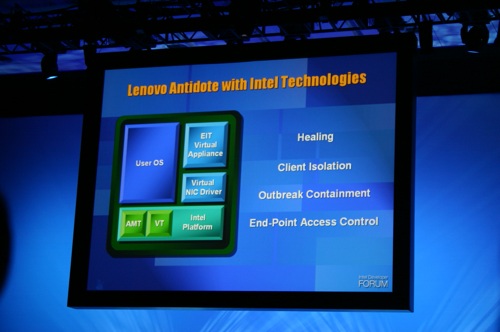
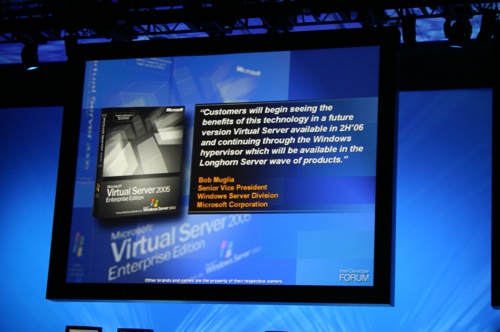
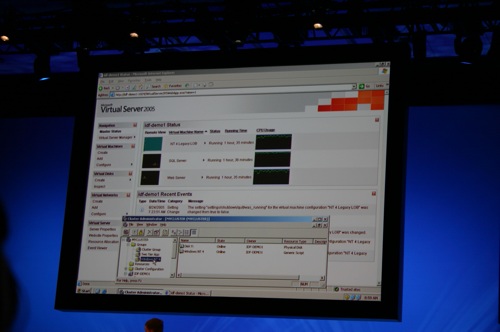
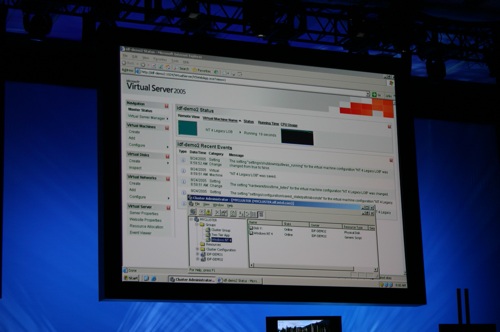
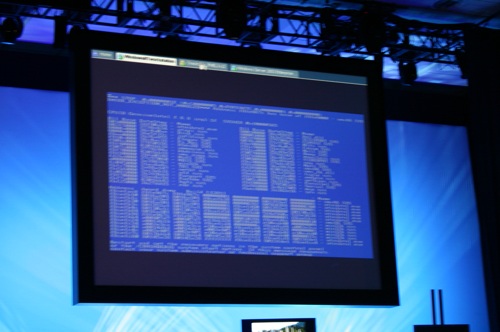

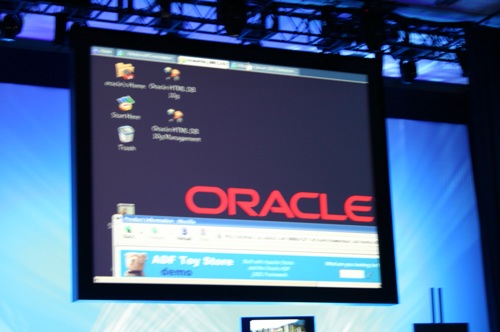

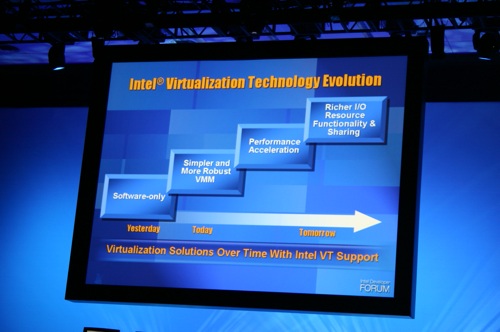








11 Comments
View All Comments
Guspaz - Thursday, August 25, 2005 - link
A big deal was made over Microsoft Virtual Server's ability to move a virtual server to another physical box with no downtime. This is nothing new. Xen can alreay do this WITHOUT any special instruction extensions. As in, it can do it now, on any hardware.In addition, VMware's bluescreen demonstration is impressive until you realize that it too is nothing new; you can do the exact same thing on pretty much any virtualization solution, including older versions of VMware running on older hardware.
nullpointerus - Thursday, August 25, 2005 - link
Intel's virtualization technology is impressive because it is done at the hardware level, not because it was never done before. Read the last three paragraphs of this:http://en.wikipedia.org/wiki/Hypervisor">http://en.wikipedia.org/wiki/Hypervisor
So Vanderpool and Pacifica can efficiently run multiple, unmodified operating systems at the same time.
The blue screen thingy was a proof-of-concept showing that the Intel chip was working.
islandtechengineers - Sunday, August 28, 2005 - link
There’s a good point. It could be an attempt to help get the word out with multi OS server machines. I’ve witnessed a group load of server machines that aren’t cost efficient as a multi server setup. If I remember correctly (I haven’t checked out VMWARE lately), vmware required a host platform to operate properly and this appears to be their step up. I think it’s a great idea to run their setup without an initial host / parent.tanekaha - Thursday, August 25, 2005 - link
HmmChanging processors improved the good hole hit rate from 20 to 70%
Why ??
Were the old processors getting the sums wrong?
I can`t get my head round this.
You`d think all ya needed was more time on old processors
I`d appreciate enlightenment on this
Tanekaha
Calin - Thursday, August 25, 2005 - link
Yes, they were using the old Pentiums with error in FPU... (end sarcasm)I don't know for sure, but I think using processors that have more horsepower they can use more samples from previous holes. Some of these wells must be holed at a kilometer or more deep, and if one uses more sampling points in calculation, the results can be spectaculary better (or just as good, as this depends of lots of other factors).
However, doubling the points might increase the computing load ten times or maybe more. So, the need for better computers.
ceefka - Saturday, August 27, 2005 - link
Nice, if you still have to exploit Iraq (end sarcasm).jamawass - Wednesday, August 24, 2005 - link
Will they have on chip memory controllers?ceefka - Saturday, August 27, 2005 - link
All I saw on my quick read were massive on die L2/3 memory: 4 - 16MB and they are holding on to Hyperthreading.knitecrow - Wednesday, August 24, 2005 - link
All these Code names are making my heard hurtLeper Messiah - Wednesday, August 24, 2005 - link
so true...i'm confused as all hell when I read about sossaman, and tulsa and whichmacallit...